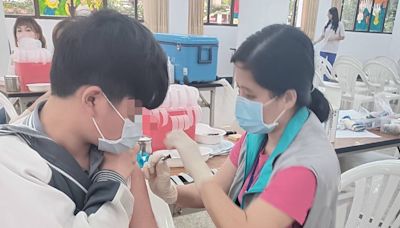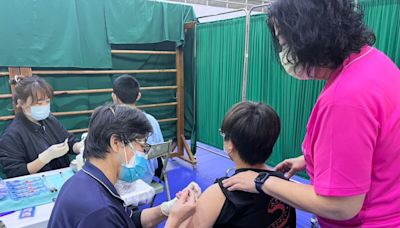搜尋結果
HPV is a group of more than 200 related viruses, which are designated by a number for each virus type. Some HPV types, such as HPV5, may establish infections that persist for the lifetime of the individual without ever manifesting any clinical symptoms. HPV
- Human papillomavirus spread by direct contact
- None, warts
- Most people are infected at some point in time
HPV vaccine. Human papillomavirus ( HPV) vaccines are vaccines that prevent infection by certain types of human papillomavirus (HPV). [19] Available HPV vaccines protect against either two, four, or nine types of HPV. [19] [20] All HPV vaccines protect against at least HPV types 16 and 18, which cause the greatest risk of cervical cancer. [19]
- Intramuscular injection
- Protein subunit
- Human papillomavirus (HPV)
- Taxonomy of Papillomaviruses
- Human Papillomaviruses
- Animal Papillomaviruses
- Evolution
- Structure
- Tissue Specificity
- Life Cycle
- Association with Cancer
- Laboratory Study
- Genetic Organization and Gene Expression
There are over 100 species of papillomavirus recognised, though the ICTV officially recognizes a smaller number, categorized into 53 genera, as of 2019. All papillomaviruses (PVs) have similar genomic organizations, and any pair of PVs contains at least five homologous genes, although the nucleotide sequence may diverge by more than 50%. Phylogenet...
Over 170 human papillomavirus types have been completely sequenced. They have been divided into 5 genera: Alphapapillomavirus, Betapapillomavirus, Gammapapillomavirus, Mupapillomavirus and Nupapillomavirus. At least 200 additional viruses have been identified that await sequencing and classification.[citation needed]
Individual papillomavirus types tend to be highly adapted to replication in a single animal species. In one study, researchers swabbed the forehead skin of a variety of zoo animals and used PCR to amplify any papillomavirus DNA that might be present. Although a wide variety of papillomavirus sequences were identified in the study, the authors found...
The evolution of papillomaviruses is thought to be slow compared to many other virus types, but there are no experimental measurements currently available. This is probably because the papillomavirus genome is composed of genetically stable double-stranded DNA that is replicated with high fidelity by the host cell's DNA replication machinery.[citat...
Papillomaviruses are non-enveloped, meaning that the outer shell or capsid of the virus is not covered by a lipid membrane. A single viral protein, known as L1, is necessary and sufficient for formation of a 55–60 nanometer capsid composed of 72 star-shaped capsomers (see figure). Like most non-enveloped viruses, the capsid is geometrically regular...
Papillomaviruses replicate exclusively in keratinocytes. Keratinocytes form the outermost layers of the skin, as well as some mucosal surfaces, such as the inside of the cheek or the walls of the vagina. These surface tissues, which are known as stratified squamous epithelia, are composed of stacked layers of flattened cells. The cell layers are fo...
Infectious entry
Papillomaviruses gain access to keratinocyte stem cells through small wounds, known as microtraumas, in the skin or mucosal surface. Interactions between L1 and sulfated sugars on the cell surface promote initial attachment of the virus. The virus is then able to get inside from the cell surface via interaction with a specific receptor, likely via the alpha-6 beta-4 integrin, and transported to membrane-enclosed vesicles called endosomes. The capsid protein L2 disrupts the membrane of the end...
Viral persistence and latency
After successful infection of a keratinocyte, the virus expresses E1 and E2 proteins, which are for replicating and maintaining the viral DNA as a circular episome. The viral oncogenes E6 and E7 promote cell growth by inactivating the tumor suppressor proteins p53 and pRb. Keratinocyte stem cells in the epithelial basement layer can maintain papillomavirus genomes for decades.
Production of progeny virus
The current understanding is that viral DNA replication likely occurs in the G2 phase of the cell cycle and rely on recombination-dependent replication supported by DNA damage response mechanisms (activated by the E7 protein) to produce progeny viral genomes.Papillomavirus genomes are sometimes integrated into the host genome, especially noticeable with oncogenic HPVs, but is not a normal part of the virus life cycle and a dead-end that eliminates the potential of viral progeny production. Th...
Although some papillomavirus types can cause cancer in the epithelial tissues they inhabit, cancer is not a typical outcome of infection. The development of papillomavirus-induced cancers typically occurs over the course of many years. Papillomaviruses have been associated with the development of cervical cancer, penile cancer and oral cancers. An ...
The fact that the papillomavirus life cycle strictly requires keratinocyte differentiation has posed a substantial barrier to the study of papillomaviruses in the laboratory, since it has precluded the use of conventional cell linesto grow the viruses. Because infectious BPV-1 virions can be extracted from the large warts the virus induces on cattl...
The papillomavirus genome is divided into an early region (E), encoding six open reading frames (ORF) (E1, E2, E4, E5, E6, and E7) that are expressed immediately after initial infection of a host cell, and a late region (L) encoding a major capsid protein L1 and a minor capsid protein L2. All viral ORFs are encoded on one DNA strand (see figure). T...
- Papillomaviridae
- Shotokuvirae
It was developed by Merck & Co. High-risk human papilloma virus (hr-HPV) genital infection is the most common sexually transmitted infection among women. The HPV strains that Gardasil protects against are sexually transmitted, specifically HPV types 6, 11
- AU: B2
- Gardasil, Gardisil, Silgard, others
- For Gardasil 9: Human papillomavirus, Types 6, 11, 16, 18, 31, 33, 45, 52, and 58
- Intramuscular injection
Human papillomavirus infection (HPV) causes more than 90% of cases; most who have had HPV infections, however, do not develop cervical cancer. [3] [14] HPV 16 and 18 strains are responsible for nearly 50% of high grade cervical pre-cancers. [15]
- 341,831 (2020)
Typically they appear one to eight months following exposure. [4] Warts are the most easily recognized symptom of genital HPV infection. [4] HPV types 6 and 11 are responsible for causing majority of genital warts whereas HPV types 16, 18, 31, 33, and 35 are also occasionally found. [5]
Cervarix is a vaccine against certain types of cancer-causing human papillomavirus (HPV). Cervarix is designed to prevent infection from HPV types 16 and 18, that cause about 70% of cervical cancer cases.[6] These types also cause most HPV-induced genital and head and neck cancers. Additionally, some cross-reactive protection against virus ...




